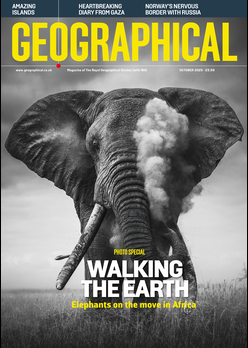
Thomas Halliday’s Otherlands takes us on an immersive tour of bizarre prehistoric lands and helps to ease our minds into the depths of our history
Review by Katie Burton
It’s phenomenally difficult for human brains to grasp deep time. Even thousands of years seem unfathomable, with all human existence before the invention of writing deemed ‘prehistory’, a time we know very little about. We might just about grasp the timeline of our own existence, with the first Homo Sapiens emerging around 300,000 years ago in the Pleistocene (the epoch just before the Anthropocene of modern times), and Australopithecus anemensis – the earliest species more closely related to humans than to chimpanzees and bonobos – living between 3.9 and 2.9 million years ago (mya) in the Pliocene. But stretching back to the age of lizards; to the world before grasses, flowers and birds; or to the very first multicellular organisms of 600 mya, is tricky.
Thomas Halliday’s book Otherlands helps to ease our self-centred minds into these depths. Moving backwards in time, starting with the thawing plains of the Pleistocene (2.58 million – 12,000 years ago) and ending up in the marine world of the Ediacaran (635–541 mya), he devotes one chapter to each of the intervening epochs or periods and, like a thrilling nature documentary, presents a snapshot of life at that time. It’s an immersive experience. Told in the present tense, we watch wildlife gather on the shores of Lake Lonyumun in modern-day Kenya during the Pliocene (4 mya); we observe giant penguins, some reaching two metres in height, waddle near the temperate coastal rainforest of Seymour Island in Antarctica during the Eocene (41 mya), and we greet the small, circular-saw-toothed mammals of the Paleocene (66 mya), an epoch ‘born in fire’ following the collapse of the dinosaurs.
We then move on to the dinosaurs themselves: the vibrant, verdant world of Cretaceous-era China; the marine predators of the German Jurassic, a time when life drifted to new places on floating logs and sea-lily colonies; and the tree-dwelling drepanosaurs of the Triassic. This world, as told by Halliday, is altogether more surprising and more diverse than most dinosaur documentaries would tell it.
But it’s perhaps the time before the dinosaurs that is the most difficult of all for human minds to comprehend, and hence the chapters I found most rewarding. This is a time when the wildlife, plants and the very shape of the land itself become more and more alien. The gorgons of the Permian (253 mya); the diamond-patterned lycopsid trees of the Carboniferous (309 mya), destined to be dug up as coal; and the vast volcano of Ben Nevis in the Devonian (407 mya) have failed to enter popular consciousness. As we begin to enter a time when land plants are rare, where mammals and reptiles are nowhere to be seen, and where even soil as we know it doesn’t exist, Halliday’s vivid descriptions become more and more necessary for our understanding.
These descriptions are only snapshots; each chapter zooms in on one small portion of the planet. And yet, in their detail, they’re more helpful in allowing us to picture these ‘otherlands’ than a more comprehensive overview of the planet at each time could ever be.
Of course, these pictures aren’t necessarily totally accurate; in fact, they are unlikely to be. Woven into this story, Halliday, a palaeontologist, explains that the thriving worlds he describes are derived solely from cold, dead fossils, many of which are incomplete. The only way to experience these worlds, he writes, ‘is rockwise, to read the imprints in the frozen sand and to imagine a disappeared Earth’. He admits that where there are debates or diverging theories on a topic, he has picked one and run with it. But what other choice is there? ‘Those worlds, those otherlands, cannot be visited – at least not physically,’ writes Halliday. This is really the closest we can get.
There’s still a bit of brain work required to get through Otherlands. Moving backwards through time does mean that the timetable takes a bit of getting used to for anyone not familiar with it – we meet creatures recovering from an extinction event that we haven’t reached yet, for example. But with deep time it’s best not to be too much of a perfectionist; even the best of us are dealing with estimates, and sometimes with guesses.
I was struck when reading Otherlands of a curious dichotomy. On the one hand, these are indeed bizarre ‘otherlands’, populated by creatures and greenery unlike any on Earth today. And yet, there’s another side to it. ‘Everywhere, always, life is built upon life,’ writes Halliday, and it’s this sense of continuation, even after devastating extinction events, that struck me most of all. The life that exists on Earth today is just as curious and unusual in its own way as that from any period of history, and it’s all a result of what has come before. It’s a poignant revelation in light of Halliday’s epilogue, which unsurprisingly touches upon our current climate crisis. ‘Change, eventually, is inevitable,’ he concludes, but we would do better to let the planet take its own time, to ‘allow the shifting sands of geological time to lead us gently into the worlds of tomorrow’.




